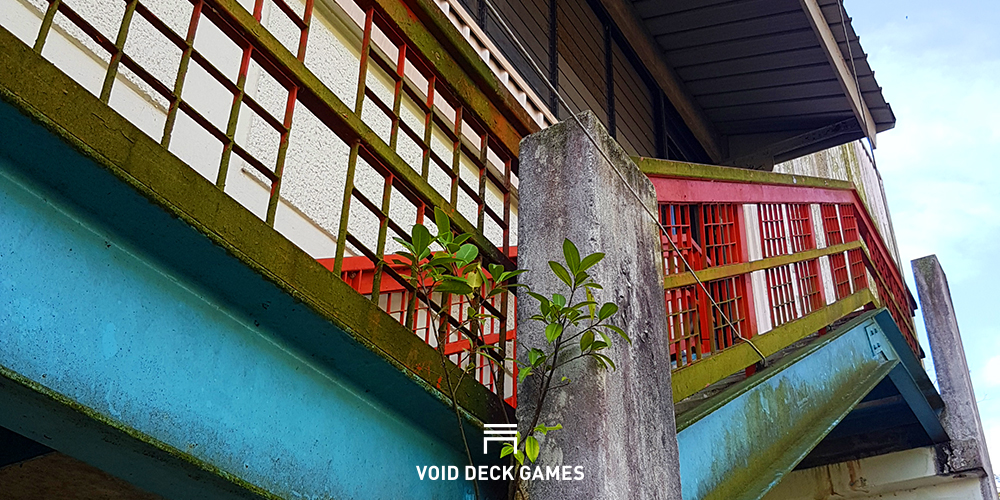One of the trickiest parts of designing an immersive game is finding the perfect location.
An immersive game creator begins with a story or game mechanic etched in fevered imagination. Unlike video game designers or tabletop game masters, we cannot rely on animation, environmental art or even skilled dramatic exposition to create suspension of disbelief in players.
Like Nordic LARPs, what you see is what you get.

Our immersive game medium requires a player to interact with a space. He needs to feel the grime scraping the soles of his boots, squint at shadows dancing in the dying light or gawk at the splendor of an urban ruin. A good location is as powerful a storytelling device as an emotive performance by an actor.

The setting eases a player’s mind into his new character. It sells the plausibility of an imaginary world. It appeals to a player’s natural curiosity for exploration.
Make memorable locations one of the cornerstones of your immersive game’s design.
Here are some of my own criteria for selecting a game’s location.

Mood & Atmosphere
A location’s most intangible quality is also its most priceless.
A decrepit urban ruin overgrown with tendrils of moss and caked in twenty years of dirt can pass off as a shattered post apocalyptic bunker.
A private study lined with taxidermied animals with missing eyes suggests weirdness and insanity in its mysterious occupant.
A rowdy bar at Orchard Towers can paradoxically be used as a meeting place with a fugitive nun hiding from crooked cops.
These examples illustrate how choosing locations that already convey meaning can create mood and subtext to your story.

Privacy & Isolation
Immersive, experiential games offer players a powerful avenue of escapism from the rigours of reality.
At its heart, we are in the business of selling fantasy.
Isolation is an important factor in choosing your location. Crafting immersive games is like casting an illusion and nothing shatters that more than gawking bystanders.
“Muggles” find it difficult to maintain suspension of disbelief and it is imperative for game designers to craft our games around this mindset. Locations near major roads, bustling buildings and human traffic make it difficult to stay immersed in an imaginary world.
Playing a character role and performing in front of peers and strangers is intimidating for non-actors. Players need privacy to let loose their inner child and feel safe enough to be foolish even at their most vulnerable.


Safety
Cool spaces in ulu locations usually contain an element of danger.
When players are exploring a location during gameplay, you will not be able to monitor their movement and behaviour at all times. It is imperative to consider the worst possible scenarios in case of reckless and foolish play.
The most serious injuries occur from falls so be aware of height dangers. Rooftops are awesome vantages for dramatic scenes but make sure players are supervised at all times. It only takes a moment of folly for disaster to strike.
Another common cause of accidents is poor illumination. During the game, players will be in a heightened state of adrenaline and stress. A dark corridor is a recipe for player collision and an open drain shrouded in shadow can easily become a pit trap for your unwary adventurers.
As a game creator, players entrust you with their health and well being. Do a proper risk assessment, ensure that facilitators are qualified first aiders and rehearse the medical evacuation procedures with your team.


Accessibility
Accessibility is a double edged sword when it comes to hosting an immersive game. Singaporeans are typically put off by inaccessible parts of Singapore. Imagine the collective moans and groans when you tell your friends about an cyberpunk salvage game set in industrial Tuas. There is obvious merit in hosting a game not too far from public transportation.
However, consider the opposite. Your players are already a rare breed of adventurous thrill seekers willing to put themselves “out there” for a novel experience.
The inaccessible locale conveys its own aura of mystery, magic and mystique.
Exploring a location that is normally out of bounds to the public such a dilapidated primary school, an emptied out swimming pool, a cavernous warehouse or a deserted nightclub in the middle of the day is an adventure. People crave experiences outside their normal banal lives.
Trust that what you are creating has value and let players choose to make the arduous journey to earn an unforgettable memory.


Producer’s Concerns
Ideally, you would not be working alone in creating your immersive game. A producing partner is essential to make sure your project gets done on time and on budget. Pay attention to budgetary, logistical and marketing areas which are the domain of your producer.
Location hire costs money and you would need to weigh up if the spectacular black and white colonial mansion is really worth its rent. There are always cheaper alternatives to your pop-up event. The best scenario is to work with a location host that is willing to provide space for your event in return for the publicity or foot traffic that you bring.
Pay attention to basic amenities like electricity, working toilets, parking and storage space especially when doing a recce of an abandoned building. The costs of hiring generators, portable toilets and prop transportation can add up quickly.
Some locations have inherent value for marketing purposes. It is easier to publicize a zombie survival game in disused power station than selling one set in Bedok Reservoir Park.

Conclusion
My co-founder, Joanne, and I, have quit our regular jobs and have been in the business of designing and creating compelling immersive games for over a year. It has been a blast but location securing is still the most unenviable part of our job.
I hope my analysis helps other indie game creators assess their location options and make the best choice in choosing the best home for their ideas.
Raihan Harun
Void Deck Games
18 Feb 2017

